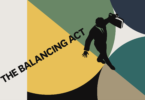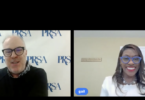Executives around the globe are facing a daunting task: leading their teams and organizations during the COVID-19 crisis.
From economic uncertainty to anxiety and disruptions to daily life, there are many immediate and potentially existential issues for an organization and its leadership. Meanwhile, the need for continuity in these unnerving times falls on the shoulders of an organization’s leaders, who are now navigating operational upheaval and changing financial outlooks.
T. Garland Stansell, APR, PRSA’s 2020 chair, says leaders must ensure that they, and their loved ones, are safe and are practicing social distancing and other prevention practices during the outbreak.
During any crisis, the well-being of employees is always paramount, especially now, as both health and budgetary factors are colliding.
“Leaders should be trying to put themselves in the shoes of others to consider how the current situation might be affecting them,” says Stansell, chief communications officer for Children’s of Alabama, the pediatric health system based in Birmingham. “What does this pandemic and the resulting interruptions mean to my team, my company, those we serve and our community — and how can we move forward?”
Considering the implications for each will help inform strategy on how to communicate with each of these various constituencies, and also identify what infrastructure and supporting resources are needed to help provide reassurance in this stressful time.
Leading teams from afar
Many employees may find themselves working remotely for an extended period for the first time, putting a strain on their routine and work-life balance as well as the internal communications process.
“We are fortunate that we have many technological resources at our disposal that help to make work and team meetings possible,” Stansell says, citing workplace software products like Google, Microsoft and Zoom, as well as Slack and Facebook. “However, a leader is working with team members amid other distractions from home or the remote location. Also, if there are silos within an organization, remote work can make it easier for those who are predisposed not to include other team members in a meeting, call or other communication to do so.”
Stansell says that leaders will need to make an extra effort to be sure that team members are connected and that they share information to keep everyone on the same page and strategies on target.
Maintaining a focused mindset
A leader should remain in a calm and focused mindset during this and other crises, providing a solid foundation of confidence, support and clarity for their teams.
“Leaders should not sugarcoat the situation and should remain based in facts and truth,” says Stansell, who stresses the importance of not adding to the fear and uncertainty that staff, volunteers, clients and others are already experiencing.
In the weeks ahead, organizational leaders will also find themselves having to provide potentially unpleasant updates to employees. Stansell again suggests that executives should try to put themselves in the position of those who will be receiving the message and show empathy.
“When delivering bad news, it is important to have all of your facts and stay rooted in those facts, including next steps and what those mean for the person or people with whom you are sharing the news — and continue to remain calm, focused and supportive,” Stansell says.
Being the best version of yourself
Executives must take care of themselves to lead and be supportive of others, Stansell says. That means getting enough sleep, eating well, exercising and participating in other activities that nurture their emotional and spiritual self.
He notes that it is essential for leaders not to take themselves so seriously that they can’t show a lighter side, even amid a challenging situation. In addition, employee responses during this health crisis may not be what they’re used to seeing in a regular office setting.
“It helps to understand that tensions are high and many people may not respond kindly. A leader should learn not to take incivility personally,” he says. “Most times, people are lashing out in fear, misunderstanding or frustration with the situation. A leader has too much to do without worrying about every harsh word or criticism.”
Find more COVID-19 resources from PRSA at this link.
John Elsasser is the editor-in-chief of Strategies & Tactics. He joined PRSA in 1994.
Photo credit: Sebastian Condrea







